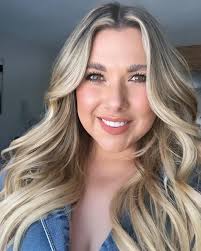Why hair extensions turn colors- hairstylist edition
**Unraveling the Mystery**
For hairstylists and clients alike, witnessing hair extensions unexpectedly turn pink or purple during the root shadowing process can be both bewildering and frustrating. How can these vibrant hues emerge when we're striving for a seamless, natural look? The key to understanding this puzzle lies in the treatment of hair extensions before they reach your salon. Many hair extensions, particularly those crafted from human hair, undergo a series of chemical processes to enhance their quality. While these treatments have their benefits, they can also make the hair more prone to unexpected color reactions.
**Avoiding the Surprises: Strategies for Stylists**
So, what can you do to steer clear of these surprising color transformations? Here are some effective strategies to consider:
**1. Wash the Brand New Hair Extensions Three Times**
One essential step in preventing color surprises is to wash brand new hair extensions three times before applying your root shadow. This may sound counterintuitive, but it can significantly reduce the risk of unexpected color reactions. When extensions are washed multiple times, any remaining chemical residues from prior treatments are removed, ensuring a clean canvas for your coloring process.
**2. Fill with Warm Tones for Darker Shades**
When root shadowing hair extensions that are two or more levels darker than the client's natural hair, it's advisable to begin with a warm tone such as and orange base. This "filling" step serves as a buffer to counteract any potential cool undertones in the extensions. Once this base is established, you can apply a neutral color on top for a harmonious blend.
**3. Embrace Warmth in Your Formula**
To avoid the dreaded pink or purple tint, be sure to include warm tones in your color formula. These warm undertones act as a safeguard against unexpected cool color shifts. Whether it's a dash of orange or golden tones, infusing warmth into your formula can help balance out the cool undertones present in the hair extensions.
**4. Respect the Color Wheel**
Remember the basics of color theory, especially the color wheel. For instance, let's consider the principle of complementary colors. If the hair extensions you've purchased have a notably ashy undertone and you layer a red base on top, the result may turn out purple due to the interaction of red and ash. To avoid this, adjust your formula accordingly, opting for warmer shades to counteract any cool undertones.
**In Conclusion**
Root shadowing hair extensions can be a transformative process, enabling you to craft stunning, natural-looking hairstyles. However, it comes with its share of challenges, including the potential for hair extensions to take on unexpected pink or purple tints. By understanding the science behind these color reactions and implementing the strategies mentioned above, you'll be better equipped to navigate these challenges and achieve the seamless, beautiful results your clients crave.
As a stylist, embracing a proactive approach to color correction and recognizing the importance of the initial preparation can make all the difference in your final outcome. Remember that every set of hair extensions is unique, and a thoughtful approach to root shadowing can ensure that these unforeseen color surprises become a thing of the past.
With experience and a solid understanding of color theory, you can master the art of root shadowing hair extensions and consistently create the beautiful, dimensional, and harmonious looks your clients desire. Ultimately, knowledge is the key to unlocking the full potential of your skills as a stylist, ensuring that your clients leave your salon with the vibrant and natural hair of their dreams.

Tiffany Loe
Owner & Master Stylist
Hair extension expert and salon owner with a passion for helping stylists succeed. Tiffany has been transforming hair and building confidence for over 15 years.




